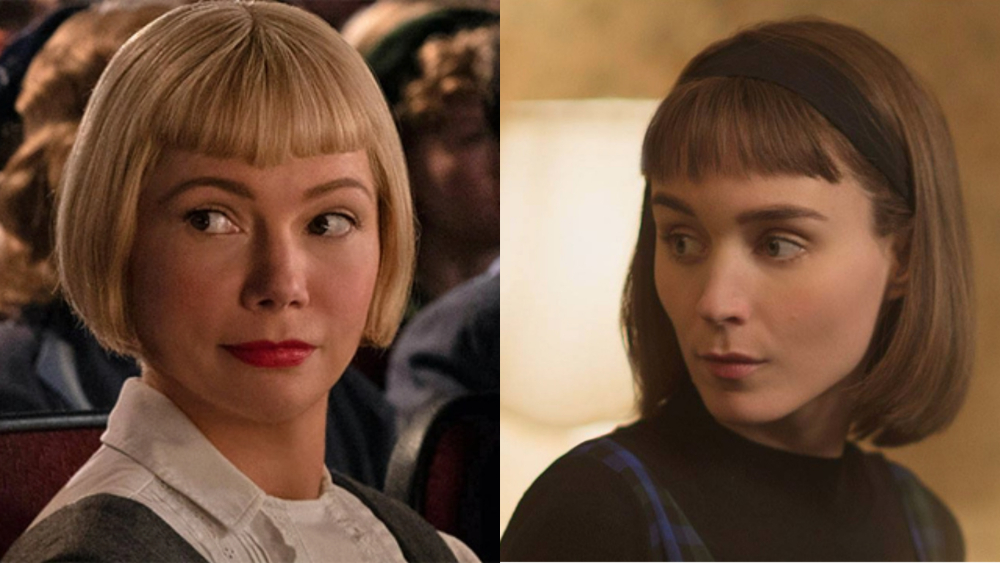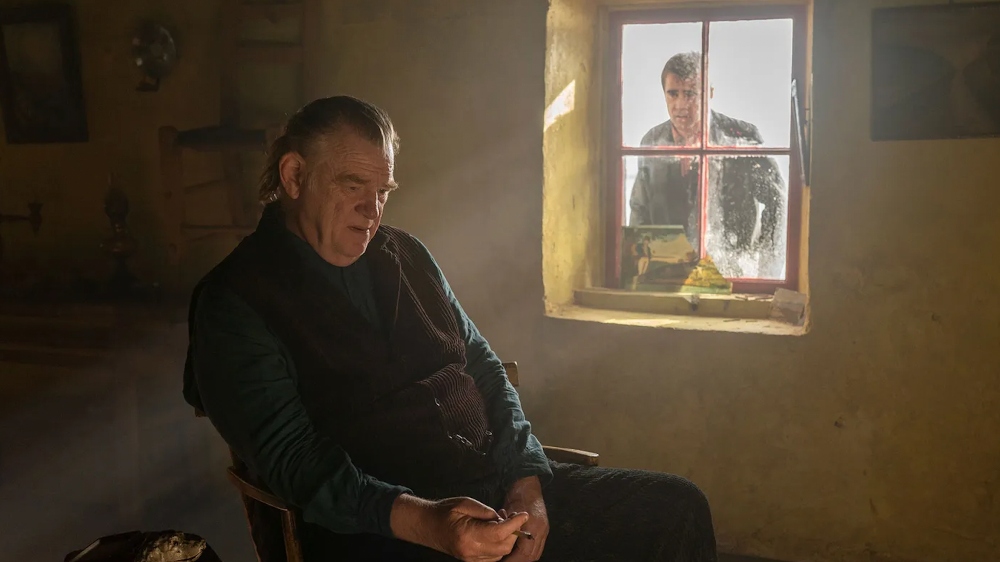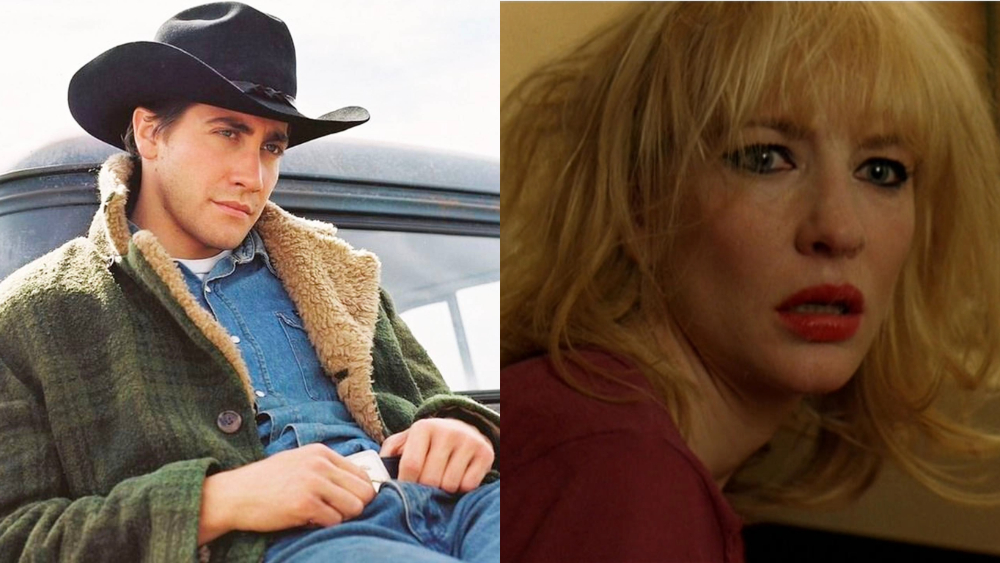Carey Mulligan and Zoe Kazan are having phone trouble.
As investigative reporters Megan Twohey and Jodi Kantor, respectively, in the upcoming #MeToo drama She Said, their calls are rarely returned. But these dogged investigative reporters don’t give up easily, so they show up at people’s houses instead. Face-to-face questions are harder to ignore. When the two journalists briefly argue about who should speak first when the door opens, it’s determined that Mulligan should take the lead, as she’s more intimidating.
“It’s the height,” she quips. That settles it. It’s a quick moment of levity in an otherwise serious movie, but also, given Universal’s decision to campaign top-billed Carey Mulligan as a “Best Supporting Actress” candidate, an unintentionally funny reminder of the shameless absurdity of so many Oscar campaigns…
Mulligan is more intimidating, it’s true. It’s not just the height difference but the simple fact of her stardom. Both she and Kazan are terrific actors but Mulligan is, by any measure, more famous, and the movie defers to this fact — not just in star billing but in its emotional climax as well when the camera slowly pushes in towards her face. Even if a movie is well balanced between two leads, as She Said ultimately is, someone has to be the first name listed in the end credits. Still, nobody in their right mind would ever think of either of these characters as a sidekick to the other. They’re a team of equals. End of story.
As such, it should go without saying that Mulligan’s top-billed star turn being pitched to Academy voters as “supporting” is yet another egregious example of the epidemic known simply as Category Fraud.
Sometime after Thelma & Louise drove into theaters in 1991 but before “one lead only!” became the rule rather than the exception, awards strategists stopped believing that two leads from the same film (especially leads of the same gender) could both be nominated in the same category, or that either of them could win if they were. Oscar history prior to this widespread belief begs to differ, from Mutiny on the Bounty to ’70s movies such as Network, Sleuth, and The Turning Point, and ’80s movies like Amadeus and Terms of Endearment.

While some leading roles have been pitched as supporting turns to voters from the late 1930s onward, this tactic used to be reserved (mostly) for child stars and teen actors, or those who weren’t as famous as their co-stars. It took a long time for the practice to become normalized. However, in the past two decades, this sleight of hand has gotten out of control. In the case of She Said, it’s ironically extra-damning because the film’s antagonist, Harvey Weinstein, practically wrote the book on how to game your movies’ Oscar fortunes.
None of this is to condemn Carey Mulligan, of course. She’s nowhere near the biggest star to have been “demoted” in the hunt for gold (hell, Julia Roberts and Brad Pitt have even agreed to it in the past), or even the most egregious example in terms of role size. For the most part, it seems that movie stars believe they’re being good sports when they agree to these suspicious campaigns, which never fail to raise eyebrows. Many of these stars, one should generously assume, think of the Oscars as just another promotional duty, and they’ll do anything to support the film and draw attention to it, which in the case of She Said is a worthy goal. Thus, you can claim, as many fans of actors who are saddled with these campaigns year after year do, that they themselves are not to blame. “It’s all just studio greed,” people reason.
But it doesn’t matter who is to blame once the harm is done. And quite a lot of harm is done once you stop to think about it. Entire careers are rewritten due to category fraud.
While some stars may think of participating in category fraud as just being a good sport, or perhaps a team player, the truth is that by sheer virtue of being stars, they overshadow true supporting actors. Stars who pretend they aren’t stars are contributing to the illusion that their own teammates do not exist, whether consciously or not.
The examples are numerous in the past 30 years once dual-lead campaigns went the way of the dinosaur. Consider the case of Rooney Mara, who was deemed a “supporting” character in Carol. While it’s true that Cate Blanchett played the title role, the film was told from the point of view of Mara’s character, Therese, who also had the most screen time. As a result of Mara’s campaign, there was no room for voters (who tend to go where they’re led rather than muster the nerve to reject these campaigns outright) to notice that the pitch-perfect Sarah Paulson was doing inspired supporting work as Carol’s best friend and former lover.
Likewise, top-billed Mulligan being campaigned in the supporting actress category for She Said obscures the work of her co-stars, Samantha Morton and Jennifer Ehle. Morton is given a long scene that she performs with righteous anger, while Ehle’s moving work in a few scenes is performed with utter precision. But stars, just like the leading roles they typically play, pull focus even when they don’t intend to. It’s simply unfair and unreasonable to expect that a supporting performer with only a few scenes can fairly compete with a big-name co-star who has been in the entire film. It’s just not a level playing field.
That’s why it’s admirable, given her significant amount of screentime, that first-billed Michelle Williams chose a leading campaign for Steven Spielberg’s upcoming coming-of-age film The Fabelmans. The move shocked pundits who expected her to sail to a win on both the strength of her work and the presumed frontrunner status of the film itself. While her son, Sammy (Gabriel LaBelle) is the classic “protagonist” of the story, the film is called The Fabelmans, plural, and in many, it is a drama about a boy and his mother. When the story isn’t focused on Sammy, it’s focused on his mother, though to be fair, it’s usually both of them simultaneously. Nobody would have flinched at campaigning Williams as a lead actress years ago (much smaller performances campaigned lead before the mid-’90s), before it became expected for co-leads to campaign as if they weren’t headliners themselves.

Elsewhere, this year’s Supporting Actor campaign for Brendan Gleeson in the fantastic Martin McDonagh film The Banshees of Inisherin is a lesser offense as categorizations go, and some would say it’s no offense at all, but it speaks to the same problem. While it’s true that Gleeson has slightly less to do than Colin Farrell, it’s still a tragicomedy about two best friends, each of whom has their own scenes without the other. Stories centered on two people, whether they’re lovers, best friends, co-workers, or related by blood, generally require that both actors have large roles. If Gleeson campaigned as a lead, perhaps Barry Keoghan, who makes a number of incredible and moving choices in a very obviously supporting role, might be a major contender.
But even if a leading player goes supporting without hurting a fellow cast member, there are problems. Leading roles often skew traditionally “beautiful” — already famous, younger, and, yes, whiter due to Hollywood’s systemic biases and how they relate to perceived bankability, the star machine, and who gets which roles. Every vote for a leading role in the supporting categories reinforces the status quo of power within the industry and discourages any spreading of “the wealth,” so to speak. Category fraud can prevent character actors from ever becoming leads (for any number of reasons), as well as actors who are marginalized in any way — be it their age, race, or where they sit in the Hollywood pecking order — from receiving the kind of media and industry attention that Oscar nominations bring. Say what you will about the waning power of the Oscars as a brand, but they still can and do boost the careers of those who are recognized with nominations.
The Best Supporting Actress race this year is already overcrowded with a diverse array of brilliant actors who have never been nominated, including Hong Chau, Kerry Condon, Jamie Lee Curtis, Dolly De Leon, Claire Foy, Nina Hoss, Stephanie Hsu, Thuso Mbedu, and Janelle Monae, but if voters opt to squeeze in a leading lady, then there will be one fewer of them nabbing their first nod. The problem is less pronounced in Best Supporting Actor this year but sometimes that category is even worse, as it’s often treated as a spillover category for leads who never ran as such.
The ripple effects keep on coming and none of them are good, rotting logic and the Oscar brand. It is hard to take awards seriously, for example, when the Academy claims that neither of the title characters in Judas and the Black Messiah was a lead. If they weren’t, then who was? Who were they supporting? Meanwhile, ignoring ensemble players discourages audiences from engaging with the movies beyond what, or rather who brought them to the theater in the first place (often the stars/leads). It discourages people from thinking about what’s happening in the margins of any drama, which is often what elevates the main story and leading work. When you ignore true supporting roles, you lose all sorts of curiosity-piquing sidebar fascinations from mainstream movie history. It’s great fun to watch old Oscar vintages and discover them. Seriously, try it!

We’ve also seen this practice erode almost everyone’s basic understanding of dramaturgy given the number of mental pretzels people will bend themselves into to explain why, say, Jake Gyllenhaal in Brokeback Mountain or Cate Blanchett in Notes on a Scandal was “supporting” as the other member of a duet film.
The fact is that the supporting categories were not created with the purpose of manufacturing yet more kudos opportunities for big stars, or to give them an “easy” win if they never managed to take home a gold statue. That’s what the Honorary Oscars are for. The two invaluable supporting categories should be used as originally intended. That’s where you recognize great character actors, rising stars who aren’t yet nabbing huge parts, and on occasion, yes, actual movie stars if they take on a small role and ace it.
As for how to stop this cynical practice in its tracks, who knows? Apart from something drastic like giving “Best Supporting” winners a plaque (as it was for the first six years of those categories) rather than a statue, what would dilute the appeal of this practice for the stars and studios?
I propose a system that’s not unlike the Tony Awards, where “Lead” versus “Featured” categorization is more formalized. You’re locked in by your star billing unless exemptions are made. If you’re one of the top two billed, you are a lead, period, unless you petition an Executive Committee to campaign otherwise. This would instantly eliminate the most egregious cases of category fraud. It’s easy to live with a few eyebrow-raising mistakes of categorizations but it’s foolish to embrace this now annual ritual of Oscar campaigning that has no basis in common sense.
Nathaniel Rogers runs The Film Experience, where he has been predicting the Oscars with exceptional accuracy for many years.



